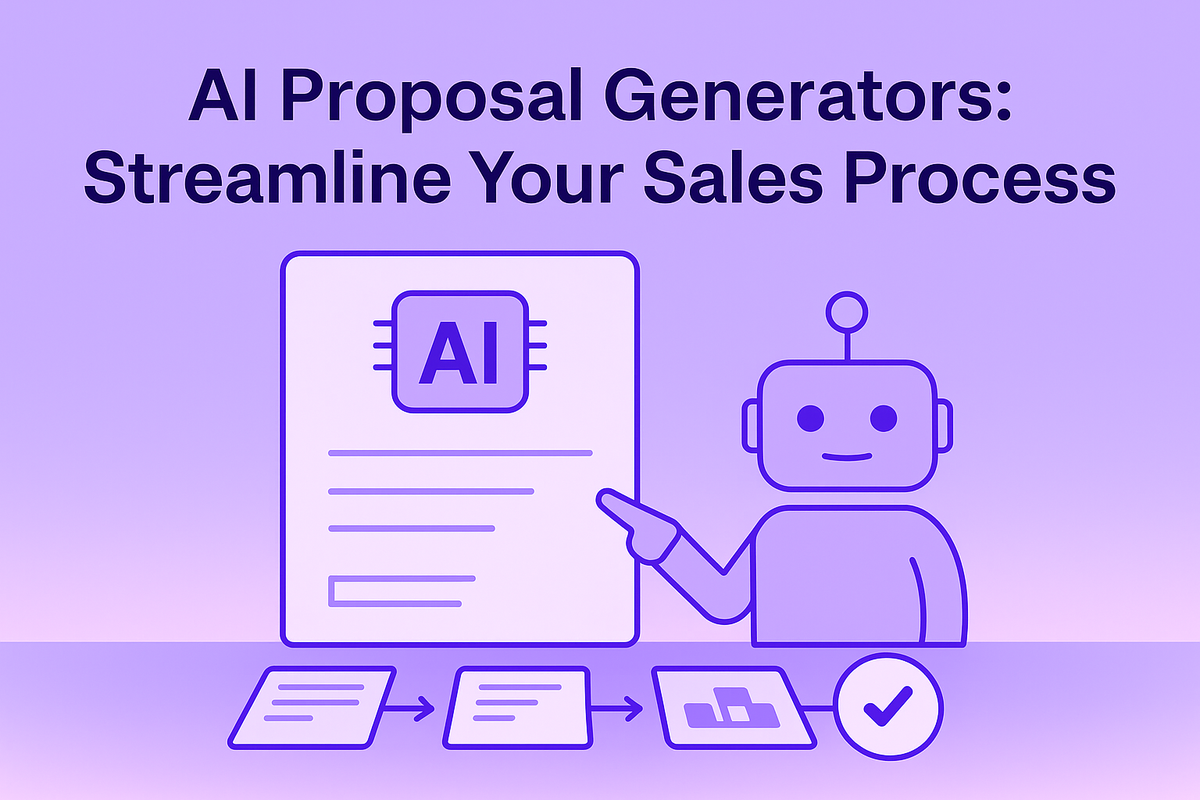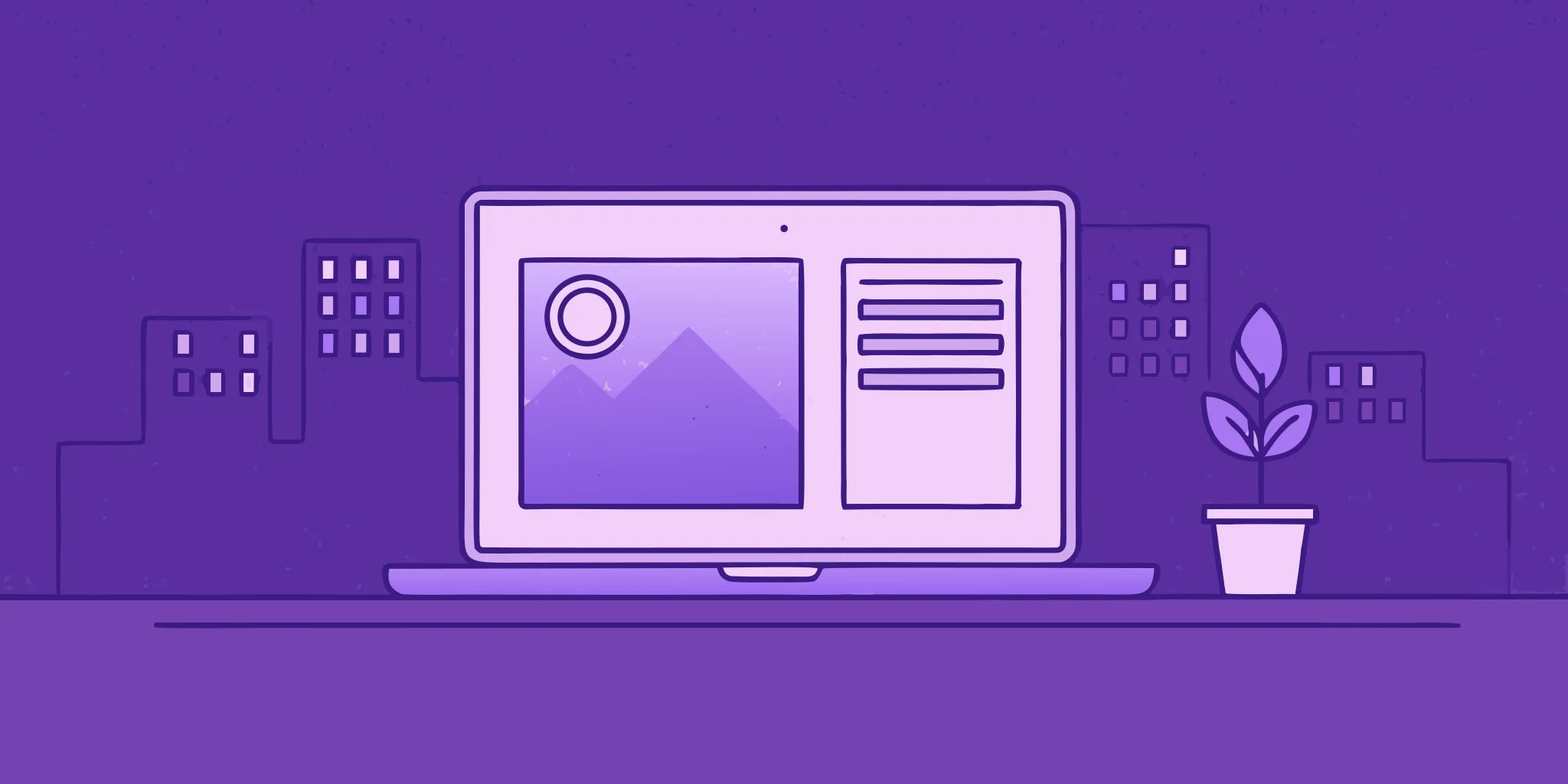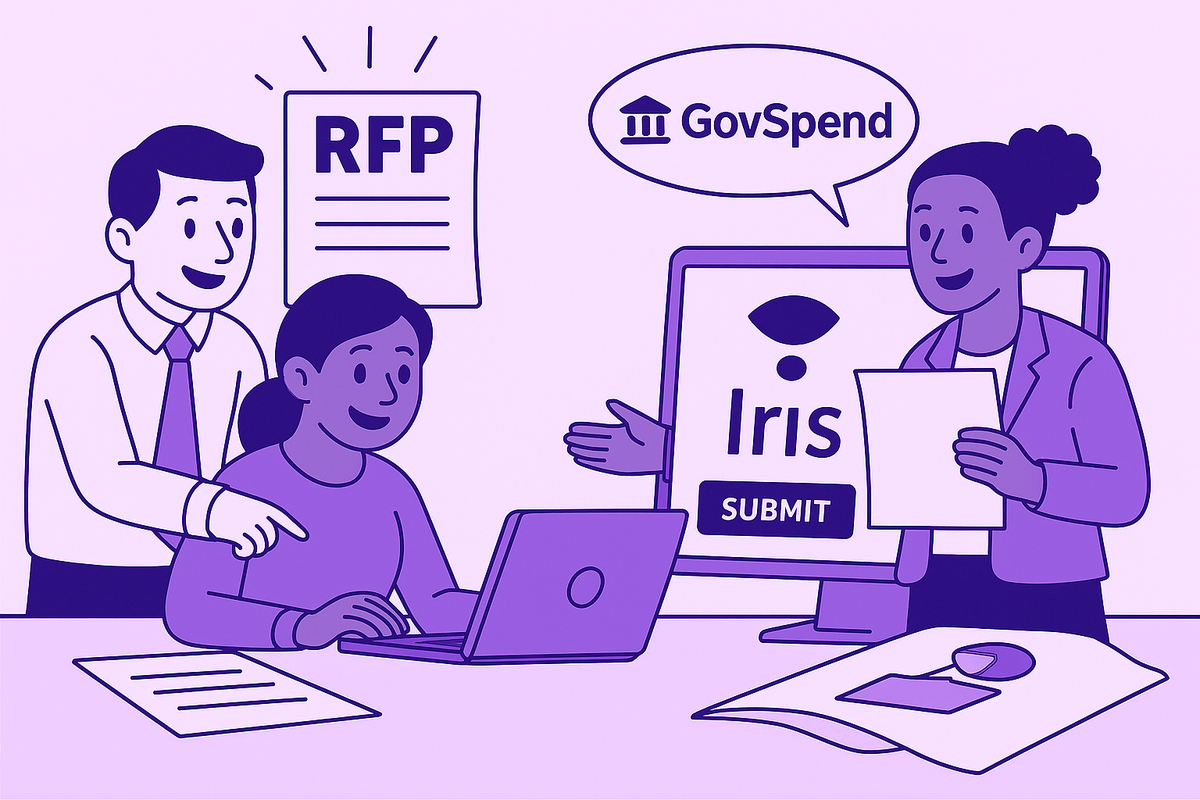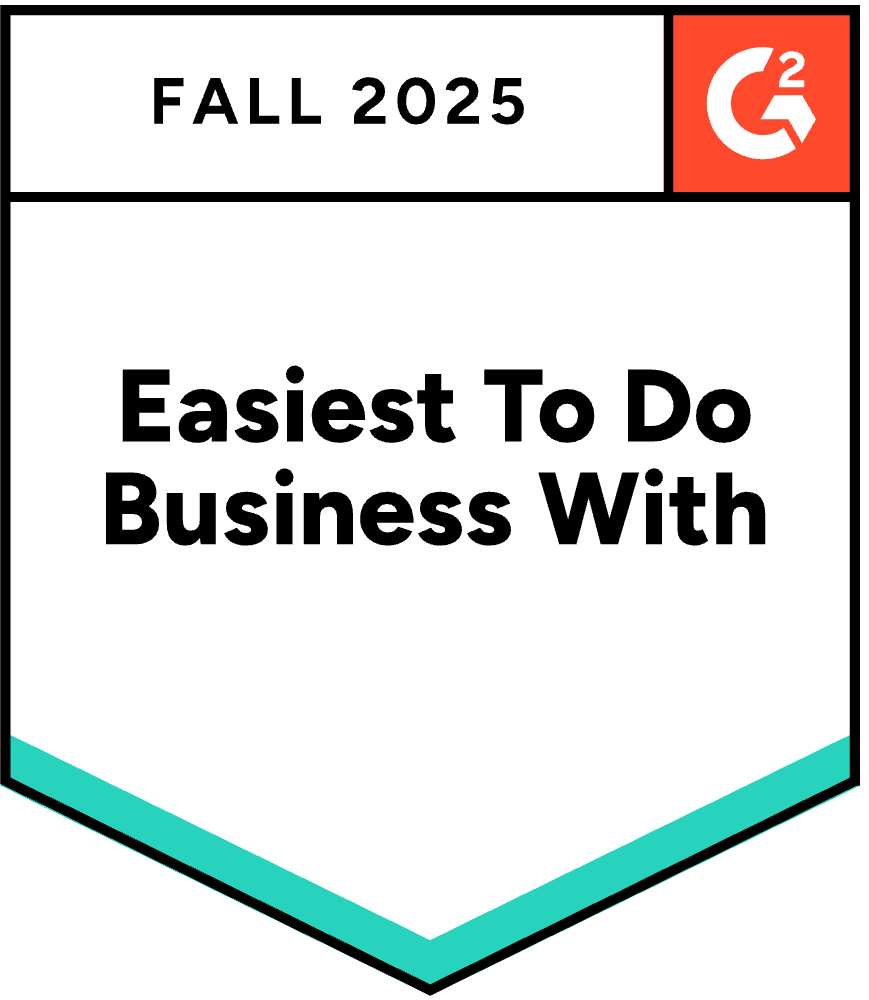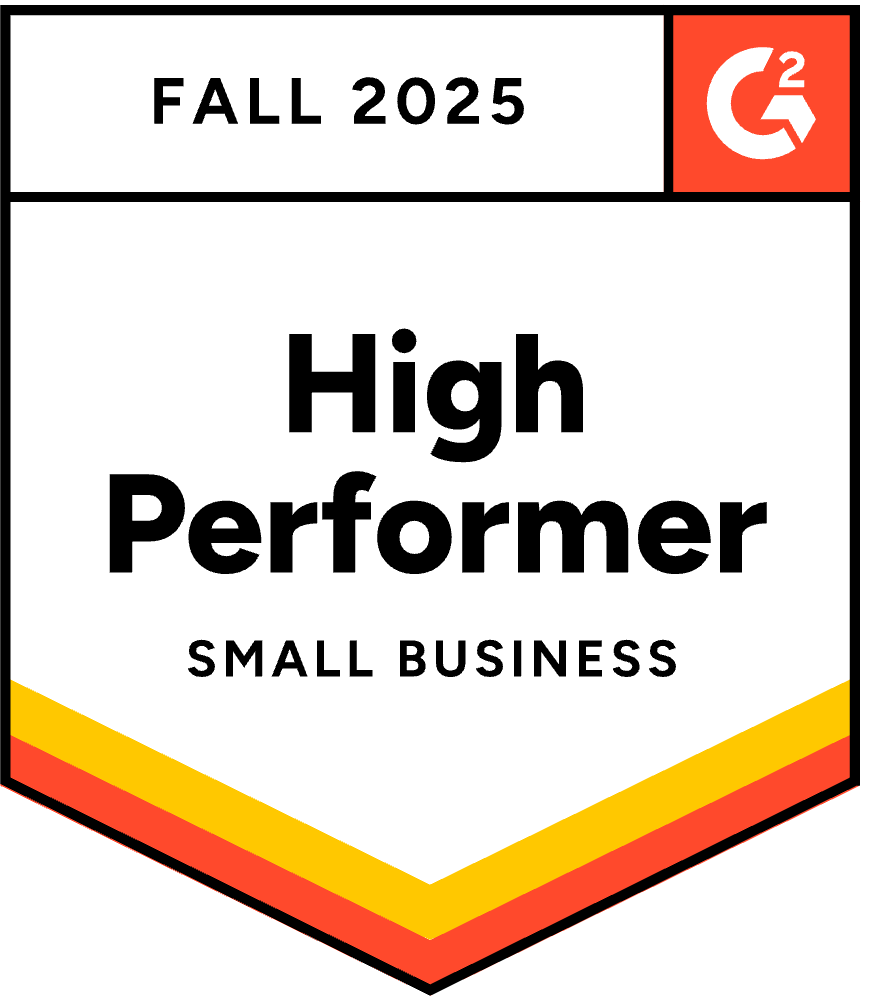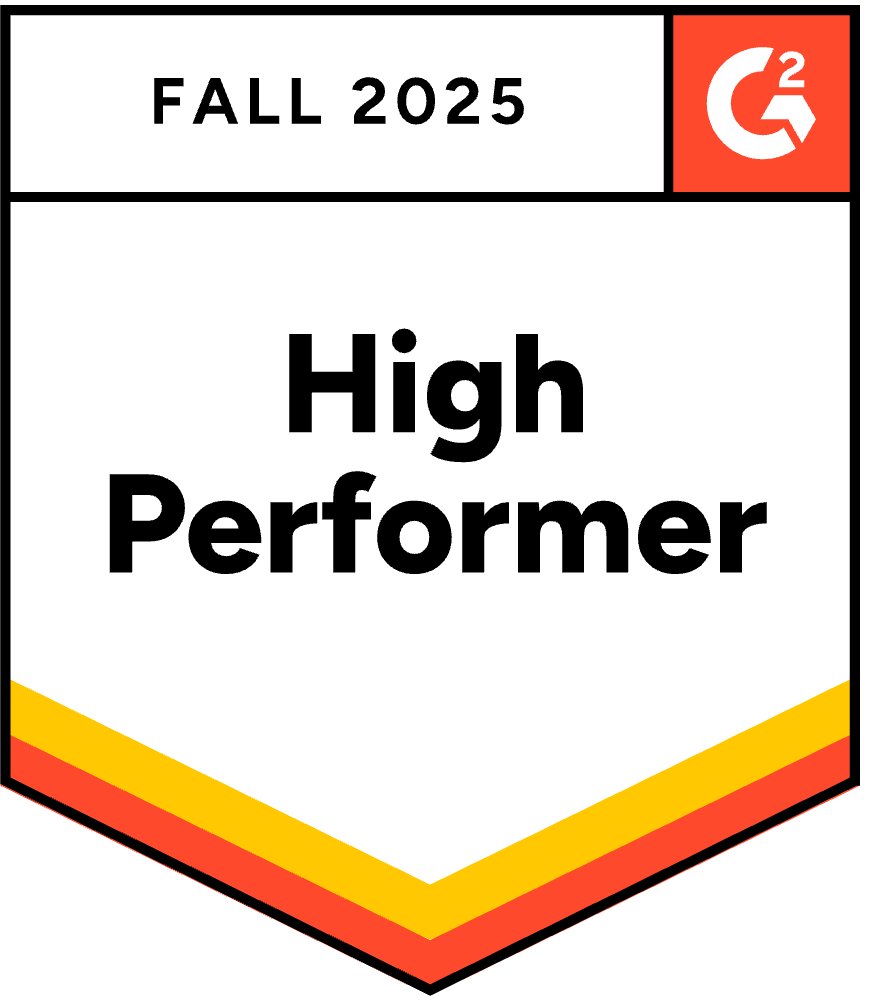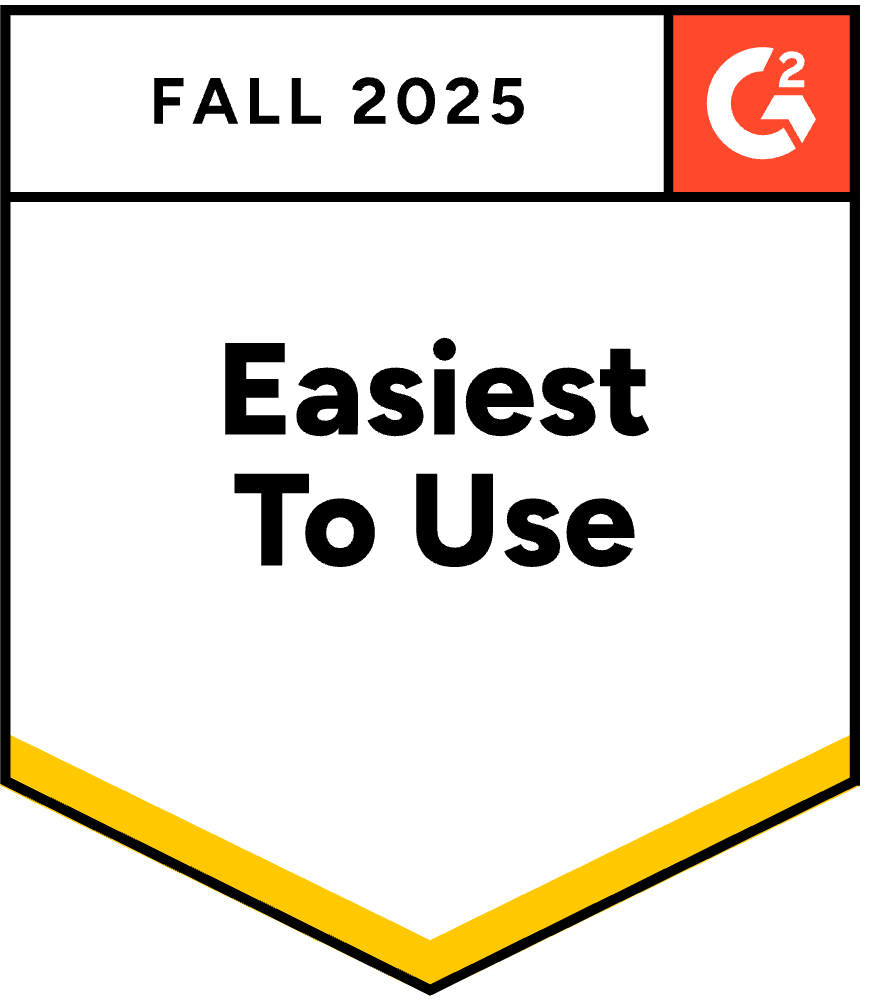Save Time and Win More with RFP Automation
October 2, 2025
By
Evie Secilmis

What could your sales team accomplish with more time? Instead of getting bogged down by administrative tasks, they could be building stronger client relationships, identifying new opportunities, and focusing on the strategic work that actually closes deals. The manual RFP process is one of the biggest time sinks for any sales organization, but it doesn’t have to be. By implementing RFP automation, you give your team back their most valuable resource. This guide explains how these tools work to handle the repetitive parts of proposal writing, freeing your experts to focus on crafting compelling, personalized responses that win more business.
Key Takeaways
- Focus on Strategy, Not Tedious Tasks: RFP automation handles the repetitive work of finding answers and formatting documents. This frees your team from administrative burdens, allowing them to dedicate their expertise to customizing proposals and winning deals.
- Ensure Consistency with a Central Content Library: A single source of truth for all your approved content is the foundation of automation. It guarantees every proposal is accurate and on-brand, which builds credibility and eliminates the risk of using outdated information.
- Make Data-Driven Decisions to Improve Win Rates: Stop guessing what works. The right software provides clear analytics on your performance, from response times to content effectiveness. Use these insights to continuously refine your process and make smarter strategic choices that lead to more wins.
What is RFP Automation, Really?
Let’s cut through the jargon. At its core, RFP automation is about using smart technology to streamline how you respond to a Request for Proposal. If you’ve ever spent a weekend digging through old documents for the perfect answer or coordinating with five different departments just to get a single proposal out the door, you already understand the problem it solves.
Instead of manually copying and pasting information, chasing down subject matter experts, and battling formatting in a Word document, automation software does the heavy lifting for you. It helps you create, manage, and submit winning proposals faster and with far less stress. This isn't about replacing your team's expertise; it's about giving them the right tools to focus on strategy and customization, rather than tedious administrative tasks. The goal is to make the entire process more efficient, consistent, and ultimately, more successful.
How We Got Here: From Spreadsheets to Smart Software
For years, the RFP response process has been stuck in the past. Many teams still rely on a patchwork system of shared drives, endless email chains, and massive spreadsheets to track questions and answers. This manual approach is not only slow but also incredibly prone to error. You risk using outdated information, creating inconsistent messaging, and completely burning out your team.
The shift to smart software is a direct response to these challenges. Modern tools use AI to instantly find the most relevant, up-to-date answers from a central knowledge library. Instead of starting from scratch every time, you have a foundation of trusted, pre-approved content at your fingertips. This technology transforms proposal writing from a frantic scramble into a streamlined, proactive workflow, helping you improve win rates and get ahead of the competition.
The Core Parts of an RFP Automation Tool
So, what’s actually inside an RFP automation tool? Most platforms are built around three key components that work together to simplify your process. First is the Content Library, which acts as your single source of truth. This is where all your best, most accurate, and brand-approved answers live, neatly organized and easy to search.
Next is the smart technology, typically powered by Artificial Intelligence (AI). This is the engine that reads new RFPs, understands the questions being asked, and automatically suggests the best possible answers from your library. Finally, these tools offer features that streamline your workflow, making it easier for your team to collaborate, assign tasks, and track progress from start to finish.
The Role of AI in Modern Proposal Writing
AI is the real game-changer in modern proposal writing. It goes beyond simple keyword searching to understand the context and intent behind each question in an RFP. This allows it to intelligently match questions with the most relevant content from your library and even suggest complete, well-written responses. This first draft can be generated in minutes, not hours.
From there, your human experts can step in to review, edit, and approve the AI-suggested content, ensuring every proposal is perfectly tailored and accurate. By handling the repetitive tasks, AI frees up your team to focus on what truly matters: crafting a compelling story that wins the deal.
Solving Common RFP Headaches with Automation
Winning Back Your Time and Resources
Let’s be honest: manually responding to RFPs can feel like a full-time job on top of your actual job. The endless cycle of searching for answers, copying and pasting from old documents, and formatting everything just right eats up countless hours. This is time your team could be spending on building relationships or closing deals. RFP automation gives you that time back. It handles the repetitive, administrative tasks, allowing your team to generate first drafts in a fraction of the time. Instead of getting bogged down in the details, your experts can focus on strategy and tailoring your proposal to win. It’s about working smarter, not harder, and reclaiming your team’s most valuable resource: their time.
Keeping Your Responses Consistent and High-Quality
When multiple people are pulling answers from different documents, inconsistencies are bound to happen. An outdated product spec or an off-brand marketing message can slip through, hurting your credibility. RFP automation solves this by creating a single source of truth. By using a centralized content library, you ensure every proposal uses the most accurate, approved, and on-brand information. This means no more rogue answers or frantic last-minute checks. Your proposals will always reflect the best of what your company has to offer, maintaining a high standard of quality that builds trust with potential clients. This consistency is key to presenting a professional and reliable image every single time.
Making Team Collaboration Less Painful
Chasing down subject matter experts (SMEs) for their input and managing feedback through endless email chains is a recipe for frustration and missed deadlines. RFP software brings order to this chaos. It provides a central workspace where everyone can contribute, review, and approve content. Features like automated notifications, clear assignments, and progress tracking keep the entire team aligned without constant meetings. You can easily see who is responsible for what and where each section stands in the review process. This streamlined workflow makes it easier for your team to work together effectively, ensuring that every proposal benefits from the right expertise without the usual collaborative headaches.
Finally Organizing Your Content
Is your best proposal content scattered across shared drives, old emails, and random spreadsheets? If you’re tired of hunting for that one perfect answer you know you’ve written before, a content library is the solution. This isn't just a folder; it's a smart, searchable database for all your company information, from product details to case studies. RFP automation tools help you build and maintain this library, making it the heart of your response process. Even better, some platforms like Iris can proactively identify outdated information across your systems, ensuring your content is always fresh and accurate. This organized approach means you can find what you need instantly and respond with confidence.
Meeting Security and Compliance Needs
For many businesses, security and compliance aren't just details—they're deal-breakers. Answering detailed security questionnaires (VSQs) and due diligence questionnaires (DDQs) requires absolute precision. A single wrong answer can put a deal at risk. RFP automation helps you manage these critical responses with care. You can store pre-approved answers to common security and compliance questions in your content library, ensuring every response is accurate and vetted. Top-tier platforms also prioritize the security of your own data, using your information responsibly and meeting high industry standards. This gives you peace of mind that your proposals are not only compelling but also compliant.
Key Features to Look For in RFP Software
Choosing the right RFP software can feel overwhelming, but it really comes down to a few core capabilities that will make the biggest impact on your team's day-to-day work. Think of this as your checklist for finding a tool that doesn’t just automate tasks, but actually makes your entire response process smarter and more efficient. A great platform should feel like a true partner in winning deals, not just another piece of software to manage. As you evaluate your options, focus on features that directly solve your biggest headaches, from finding the right content to collaborating with your team and understanding what’s actually working.
A Smart, Searchable Content Library
This is the foundation of any good RFP automation tool. Imagine having all your best, most up-to-date answers, product descriptions, and company information in one central, easy-to-search place. A smart content library acts as your team's single source of truth, eliminating the frantic search through old documents and shared drives. Instead of reinventing the wheel for every proposal, your team can quickly pull approved content, ensuring every response is consistent and accurate. This library becomes the heart of your operation, housing the collective knowledge of your entire organization and making sure your best work is always just a click away.
AI That Helps You Write Faster
This is where the magic really happens. Modern RFP software uses AI to do the heavy lifting, reading new proposals and automatically suggesting the most relevant answers from your content library. This dramatically cuts down the time it takes to create a first draft, freeing your team to focus on tailoring and perfecting the response instead of starting from scratch. The best AI-powered platforms learn and improve over time, getting better at recommending the right content for each specific question. It’s like having an assistant who knows your content inside and out, ready to help you build a winning proposal in a fraction of the time.
Built-in Tools for Teamwork
RFPs are a team sport, but managing collaboration can be a nightmare of endless email chains and conflicting document versions. Look for software with built-in tools that let you assign questions to subject matter experts, track progress in real time, and communicate directly within the platform. This keeps everyone on the same page and ensures a smooth, transparent workflow from start to finish. When your team can work together seamlessly in one place, you not only save time but also reduce the risk of miscommunication and errors that can jeopardize a deal. It brings order to the chaos of collaborative writing.
Connections to Your Other Software
Your RFP software shouldn't live on an island. To be truly effective, it needs to connect with the other tools your business relies on every day, like your CRM, cloud storage, and communication apps. Strong integrations create a more unified workflow, allowing information to flow freely between systems. For example, you can pull customer data from your CRM or access documents from SharePoint without ever leaving the RFP platform. This eliminates tedious data entry and ensures your proposal process is a natural extension of your existing sales operations, making everything run more smoothly.
Analytics That Show You What's Working
How do you know if your RFP process is actually improving? The right software will give you the answer with clear analytics and reporting. Dashboards can provide real-time insights into your RFP pipeline, track your win rates, and show you which content is being used most effectively. These performance metrics help you move beyond guesswork and make data-driven decisions to refine your strategy. By understanding what contributes to a winning proposal, you can continuously improve your process and close higher-quality deals more often. It’s about working smarter, not just harder, and having the data to prove it.
How Automation Changes Your RFP Process
Switching to an automated RFP process isn't just about speeding things up—it’s about fundamentally changing how your team works for the better. It transforms a chaotic, reactive scramble into a streamlined, strategic operation. Instead of constantly reinventing the wheel for every proposal, you can build a system that gets smarter with each response you submit. This shift allows your team to move from simply completing tasks to actively improving your sales strategy, backed by clear data and collaborative tools. Let’s look at the four biggest ways automation reshapes your entire RFP workflow.
A Simpler, More Organized Workflow
If your current RFP process involves digging through old emails, shared drives, and spreadsheets, you know how disorganized it can get. RFP automation brings all your work into a single, central hub. Think of it as your team’s command center for every proposal. Instead of guessing who has the latest version of an answer, you have one source of truth. The right platform uses technology to make the entire process easier and faster by letting you assign questions, set deadlines, and track progress in one place. This clarity eliminates confusion and ensures everyone knows exactly what they need to do and when.
Higher Quality in Every Response
When you’re rushing to meet a deadline, quality can easily suffer. Automation helps you maintain high standards by creating a library of your best, pre-approved answers. This means every proposal starts with consistent, accurate, and on-brand content. Your subject matter experts are freed from answering the same basic questions over and over, allowing them to focus their time on personalizing the responses that truly matter. This focus on quality has a direct impact on your success, which is why tracking metrics like your win rate becomes so important for seeing how your improved responses are performing.
Working Together in Real Time
Collaboration is key to a winning proposal, but it’s often the most painful part of the process. Endless email chains and version control issues can slow everything down. Automation software includes tools designed to make teamwork seamless. With features like automatic notifications, clear review assignments, and progress tracking, everyone stays on the same page without constant check-in meetings. Your team can work on the same document simultaneously, leave comments, and get approvals in a structured way. This means less time managing logistics and more time creating a compelling proposal together.
Using Data to Improve Your Strategy
How do you know if your RFP process is actually working? Without data, it’s all guesswork. RFP automation provides the insights you need to refine your approach. By measuring things like time saved, response quality, and which answers are most effective, you can conduct a real impact analysis. You can see where bottlenecks are slowing you down and identify the content that contributes to wins. This data turns your RFP process into a valuable source of business intelligence, helping you make smarter decisions and improve your strategy over time, as shown in various case studies.
How to Measure Your Success with RFP Automation
Adopting a new tool is one thing, but proving its worth is another. When you bring RFP automation into your workflow, you need to know it’s actually making a difference. It’s not enough to just feel more productive; you need the numbers to back it up. Measuring your success helps you justify the investment, fine-tune your process, and show your team how their efforts are paying off. Think of it as building a business case for a smarter way of working.
The right data tells a clear story about your team's efficiency and effectiveness. Are you responding faster? Are your proposals stronger? Are you winning more deals? These are the questions we need to answer. By tracking a few key metrics, you can move from guessing to knowing, turning abstract benefits into concrete results. This data-driven approach allows you to see exactly how automation is impacting your bottom line and where you can make even greater improvements. It’s about celebrating the wins and identifying opportunities to get even better.
The Metrics That Actually Matter
To get a full picture of your success, you need to look beyond just one number. A solid impact analysis relies on a few core metrics. Start with time savings—how many hours are you getting back each week? Next, look at your win rate, which is the ultimate measure of success. Don't forget about response quality; are your proposals more accurate and compelling? Finally, consider the cost savings, which come from reduced hours and reallocated resources. Tracking these key areas gives you a well-rounded view of how automation is transforming your RFP process from a time-consuming chore into a strategic advantage.
Tracking Your Win Rate
Your win rate is the most straightforward indicator of success. At the end of the day, the goal is to win more business, and this metric tells you if you're on the right track. Before implementing automation, establish a baseline win rate. Then, track it quarterly to see how it changes. An increase shows that you’re not only responding to more RFPs but that the quality of your submissions is hitting the mark. As one expert notes, tracking your revenue-related metrics is essential for understanding how successful your RFP process truly is. With automation, you can build a stronger pipeline and see your win rate climb.
Calculating Time and Money Saved
Let’s talk about return on investment (ROI). The easiest way to calculate this is by measuring the time your team saves. Ask your proposal writers to track the hours they spend on an RFP before and after implementing automation. The difference is your time savings. To translate that into money, multiply those saved hours by your team’s hourly cost. This gives you a clear dollar amount. You can also measure your time to completion for each bid. Tools like a Customer Relationship Management platform (CRM) can make tracking these metrics much simpler, giving you a clear view of your ROI.
A Simple Way to Check Response Quality
Quality can feel subjective, but you can still measure it. One way is to track the number of revisions needed before a proposal is sent out. Fewer revisions mean your first draft is stronger. Another indicator is the number of follow-up questions you get from a prospect; a comprehensive proposal should anticipate their questions. Modern RFP software also provides analytics dashboards that offer insights into content usage and team performance. These reports give you real-time intelligence, helping you understand what’s working and ensuring every response is as strong as the last.
Getting Started: A Practical Guide
Switching to an automated RFP process might feel like a huge undertaking, but it’s more manageable than you think. The key is to break it down into a few practical steps. Think of it less as a massive tech overhaul and more as a way to organize what you’re already doing, just much more efficiently. By setting up a solid foundation from the start, you’ll create a system that not only saves you time but also helps your team produce higher-quality proposals consistently. This guide will walk you through the essential steps to get your new process up and running smoothly.
Build Your First Content Library
Your content library is the single source of truth for every proposal. It’s where all your approved answers, company information, product descriptions, and security details live. This centralized hub is the heart of your automation system, feeding the AI the information it needs to generate accurate first drafts. Start by gathering your best content from past RFPs—the responses that helped you win deals. Add in your standard company boilerplate and any other essential information. A well-organized library is the most critical part of the setup; the better the information you put in, the more powerful your AI deal desk solution will become.
Set Up an Efficient Workflow
It’s time to say goodbye to chaotic email threads and confusing spreadsheets. RFP automation software allows you to create a clear, repeatable workflow for your entire team. You can set up automated notifications to alert subject matter experts when their input is needed, assign reviewers, and track the progress of each section in real time. This creates a transparent process where everyone knows their role and deadlines are easy to manage. The goal is to make collaboration seamless, removing the administrative headaches so your team can focus on crafting winning responses. Check out the features that make this possible.
Get Your Team On Board
Introducing a new tool requires buy-in from your team. The best way to get everyone on board is to show them how it makes their jobs easier. Frame the software as a tool that empowers them, freeing them from tedious copy-and-paste tasks so they can apply their expertise where it matters most. Start by tracking a few key RFP metrics to demonstrate the impact on efficiency and win rates. When your team sees firsthand how automation reduces their stress and contributes to more wins, they’ll quickly become its biggest advocates.
Keep Your Content Fresh and Accurate
A content library is a living resource, not a digital filing cabinet you set up once and forget. Your products, services, and company information change, and your RFP answers need to reflect that. Schedule regular reviews to update existing content and remove anything that’s obsolete. The best RFP software helps with this by proactively identifying outdated information across your systems. By keeping your content current, you ensure every proposal that goes out the door is accurate and compelling, which builds trust with potential clients and protects your brand’s reputation.
Create a Quality Check Process
Automation is about speed, but it should never come at the expense of quality. It’s essential to establish a clear quality control process. A great approach is to let the AI handle the first draft, pulling the most relevant answers from your library. Then, have a subject matter expert review the content for technical accuracy. Finally, a proposal manager or editor can do a final pass to check for tone, clarity, and consistency. This multi-step process combines the efficiency of AI with the critical thinking of your team, ensuring every response is both fast and flawless. This commitment to quality is what ultimately leads to higher win rates.
Common Myths About RFP Automation
Jumping into new software can feel like a big step, and it’s easy to get tripped up by common misconceptions. When it comes to RFP automation, there’s a lot of chatter out there. Let's clear the air and look at what’s really true about these powerful tools, so you can make a decision based on facts, not fears.
Myth: Automation Replaces the Human Touch
This is probably the biggest fear people have—that a robot will take over and start churning out generic, soulless proposals. The reality is that automation is a partner, not a replacement. Think of it as the ultimate assistant. These tools handle the repetitive, time-consuming tasks like digging up past answers and formatting documents. This frees up your team to focus on what humans do best: strategy, customization, and building relationships. Your experts are still essential for reviewing, refining, and adding that personal touch that actually wins the deal. Automation just helps them do it better and faster.
Myth: The Cost Outweighs the Value
It’s easy to look at the price tag of a new tool and hesitate. But with RFP automation, you have to look at the bigger picture. The initial investment pays for itself by giving you back your most valuable resource: time. Instead of spending dozens of hours on a single proposal, your team can respond to more opportunities. This increases your deal volume and, ultimately, your win rate. When you calculate the cost of lost time and missed deals, you’ll find that the right tool doesn’t just save money—it actively helps you generate more revenue.
Myth: It Won't Scale with My Team
Some people worry that an automation tool will work for a small team but will fall apart as the company grows. The opposite is actually true. Manual processes are what fail to scale. Relying on spreadsheets and shared folders becomes chaotic as your team expands and your content library grows. An AI-powered platform is built for growth. It creates a single source of truth that becomes more powerful as you add more information, ensuring every team member, new or old, can quickly find accurate, up-to-date answers. This consistency is key to scaling your proposal process effectively.
Myth: The Setup is Too Complicated
The thought of migrating all your content and training your team on a new system can be daunting. But modern RFP software is designed with the user in mind. The setup is often more straightforward than you’d expect, with intuitive interfaces and features like content management and templates to get you started quickly. Many platforms offer robust support and resources to guide you through the process. The goal of these tools is to simplify your workflow, not add another layer of complexity. A little bit of setup on the front end leads to massive time savings and less stress down the road.
How to Choose the Right RFP Software
Picking the right RFP software feels like a big decision, because it is. This tool will become a central part of your sales process, so you want to get it right. It’s not just about finding the platform with the longest feature list; it’s about finding a partner that understands your team’s needs and can grow with you. Think about your current workflow, your biggest roadblocks, and where you want to be in a year. A great tool should solve today’s problems and prepare you for tomorrow’s opportunities. To help you make a confident choice, let’s walk through the most important things to consider.
Key Questions to Ask Before You Decide
Before you even look at a demo, take a moment to clarify what you truly need. Start by asking your team: What’s the most frustrating part of our current RFP process? Is it finding the right answers, getting approvals, or formatting the final document? Your goal is to find a tool that directly addresses these pain points. Also, consider how you’ll measure success. Effective RFP management relies on tracking key metrics that show what’s working and what isn’t. Ask potential vendors how their software helps you track things like response time, win rates, and content usage. This will ensure you’re not just buying software, but investing in a solution that delivers real results.
Your Must-Have Feature Checklist
Every RFP tool will promise to save you time, but the right features make all the difference. At the top of your list should be a smart content library. You need a central place to store your best answers that is always updated and easy to search. Next, look for powerful AI assistance. Modern tools like Iris use AI to generate accurate first drafts in minutes, freeing your team to focus on strategy and personalization. Don’t forget about collaboration. The software should make it simple to assign questions, track progress, and manage approvals. Finally, insist on strong analytics. Dashboards that provide real-time intelligence into your RFP pipeline are essential for winning higher quality deals more often.
Making Sure It Integrates with Your Tools
The best RFP software doesn’t operate in a silo; it becomes a seamless part of your existing tech stack. A tool that can’t connect with the software your team already uses will create more friction, not less. Make a list of your essential platforms, such as your CRM (like Salesforce or HubSpot), communication channels (like Slack or Microsoft Teams), and cloud storage (like Google Drive or SharePoint). During demos, ask specifically how the RFP software connects with these systems. A smooth integration means you can pull customer data, share updates, and access files without constantly switching between tabs, keeping your workflow efficient and connected.
What to Look for in Security
Handing over your company’s most sensitive information to a new platform requires trust. That’s why security should be a top priority in your evaluation. Ask vendors directly about their security protocols and data privacy policies. Your information should never be used to train public AI models, and the platform should meet high security standards, such as SOC 2 or ISO 27001 certifications. A trustworthy provider will be transparent about how they protect your data. You can often find detailed information in a company’s whitepaper or a dedicated trust center on their website. Don’t compromise on security—it’s the foundation of a reliable partnership.
Related Articles
- Step-by-Step Guide to RFP Automation
- Steps to optimize your RFP process for faster bids
- Streamlining Your RFQ Process with Automation
- Key Strategies to Optimize RFP Efficiency
Frequently Asked Questions
How is an RFP content library different from the shared folders I'm already using? Think of a shared drive as a digital filing cabinet—you know the information is in there somewhere, but you have to manually search for it. A smart content library is more like a database with a built-in research assistant. It doesn't just store your answers; it organizes, tags, and understands them. When you get a new RFP, the software can instantly find and suggest the most relevant, up-to-date content, saving you from the endless hunt.
Will AI take over the writing process completely? Not at all. The goal of AI in proposal writing is to handle the repetitive work, not to remove your team's expertise. It generates a solid first draft by pulling the best pre-approved answers from your library, which eliminates the tedious task of starting from scratch. This allows your subject matter experts to spend their time personalizing the proposal, refining the strategy, and adding the human touch that actually closes the deal.
How long does it really take to get started with RFP automation software? Getting started is more straightforward than you might think. The most important step is building your initial content library by gathering your best responses from past proposals. Most modern platforms are designed to be intuitive, so the technical setup is minimal. Once your core content is in place, your team can start seeing time savings on the very next proposal. The system then gets smarter and more effective with each RFP you complete.
Is RFP automation only for large enterprise teams? While large enterprises certainly benefit, these tools are incredibly valuable for teams of all sizes. In fact, smaller teams often feel the pain of manual RFPs even more because every person has to wear multiple hats. Automation levels the playing field, allowing smaller businesses to respond to more opportunities with the same high quality as their larger competitors, all without burning out their team.
Besides win rate, what's a simple way to see if the software is working? A great early indicator is tracking your "time to first draft." Measure how long it takes your team to produce a complete draft before and after implementing the software. When you see that time shrink from days to just a few hours, you have a clear, immediate sign of the tool's impact. This reclaimed time is a direct return on your investment, as it frees your team to focus on more strategic work.
Share this post
Link copied!



